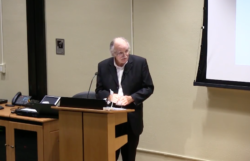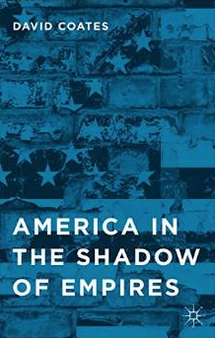Demonizing the Victims: Conservative Immigration Policy in a Time of Recession
These are not good times for advocates of comprehensive immigration reform, either here or abroad. Cutting the flow of immigrants is a hot button issue in Holland right now. It is in the UK, even in Spain[1]; and it certainly is here in the United States. With unemployment high and public debt widely seen as out of control, conservative forces on both sides of the Atlantic are finding political mileage in once more playing the immigration card.
Voters scared about job loss and house foreclosure don’t need much persuading to believe that unwanted foreigners are a major source of their present difficulties. To get back to full employment and rising wages again, so we are regularly told, public policy should tighten the border, repatriate the undocumented, and reserve local jobs for local workers. It all appears to make such perfect sense.
But appearances are deceptive here. Processes that create two sets of losers are not resolved by one set demonizing the other. They are resolved only by understanding and acting on the forces that are eroding the living standards of both.
Immigration by foreign-born workers, and unemployment among native-born ones, may go together in modern America, but the relationship between them is neither simple nor directly causal. On the contrary, three things at least are very clear in the data on contemporary trends in employment and wages – at least very clear to those not subsumed in Arizona-type hysteria. (1) Immigration, legal or otherwise, is not the main cause of the current recession. (2) The overall impact of immigration on employment, productivity and income in the contemporary US economy is broadly positive; and (3) the very forces triggering migration from the global “south” are the same ones creating unemployment and falling wages in the global “north”.
- The source of unemployment. The current deep recession under which we now struggle was not caused by labor coming north across the US-Mexico border. It was caused by an out-of-control financial sector and an inflated housing market. Bankers and brokers caused this crisis, not migrants.[2] If anyone ought to be picked up on suspicion in times of economic hardship – which no one should – Wall Street speculators in pursuit of excessive bonuses should come a lot higher on the list of undesirables than industrious migrant workers in pursuit of modest wages. The southern border does properly figure, however, in the debate about long-term unemployment in the United States. It figures not because migrants crossing it take away American jobs. It figures because US companies outsource American jobs from one side of it to the other. They export American jobs south. They export them west. They export them to wherever wages are low and cheap labor is available.[3] Unstopped outsourcing and unregulated financial speculation are causing large-scale unemployment in the U.S. right now. Undocumented migrant labor is not.
- 2. The economic impact of migration. There is clear evidence in much of the recent research data that in the long-run, immigration adds to output, competitiveness and generalized affluence. It is a wholly positive thing, as Ronald Reagan, among others, was all too aware.[4] In the short-term, however, the impact of immigration can be more negative – and adversely affect indigenous labor groups with equivalent skill-levels – but only if the economy is in recession.[5] No such negativity operates when the economy is growing; which is why economic growth, not forced repatriation, is the best immigration policy for modern economies both here and in Europe. And if there is a migration flow that is pulling down US wages and employment levels – a migration flow that does need checking – it is a migration flow occurring far from these shores. It is a migration flow of Chinese workers from the countryside to the town – a flowing involving maybe 150 million displaced peasants and one destroying (via the cheap export goods they help produce) maybe as many as 2 million US jobs.[6] One hundred and fifty million people constitute a flow equivalent to the entire population of a country the size of Russia! They make a flow of 11 million undocumented Latino workers seem paltry by comparison; and it is the big flows, not the small ones, of course, that redraw global maps of employment and wealth.
- 3. Global forces racing to the bottom. The big causal driver eroding wages and employment in the contemporary United States is not immigration, legal or otherwise, no matter what Arizona conservatives are now telling us. The big causal factor in play here is unregulated globalization – globalization financed in large measure by the unchecked export of American capital. The big process going on beneath the surface of political debate – the one shaping everything else – is the spread of industrial production from the first world (the United States and Western Europe) to parts of both the second world and the third; and the resulting flow of manufactured goods back into the heartlands of modern capitalism from export-enclaves in Asia and South America which still enjoy limitless supplies of cheap and unorganized labor. The key number on which we all need to concentrate, therefore, is not the modest one of those trying to slip into the United States without papers. The key number on which we ought to concentrate is the one recording those currently working globally on less than $1.25 a day. The World Bank recently put that number at a staggering 1.4 billion people.[7]
The global working class has doubled in size in a generation. That doubling has altered entirely the balance of power between employers and workers in both the developed and under-developed parts of the global economic system. Established “northern” labor forces, which through a century of struggle had won for themselves better wages and a degree of welfare protection, now live alongside new “southern” labor forces which are still battling for basic rights and a living wage. The industrial and political weakness of these new labor forces acts as a weight, pulling down the wages and welfare benefits of longer-established ones. The weakness of workers in the newly industrializing economies leaves them exposed to long hours of work and low wages of the kind once commonplace in North America and Western Europe. It also threatens to return northern workers to a similar condition of low pay and high exploitation.[8]
In the race to the bottom released by unregulated globalization, everyone is now beginning to lose. Chinese workers are denied decent working conditions. US workers are denied decent paying jobs; and Mexican workers – caught between the two – see jobs coming to them only briefly, before leaving Mexico in favor of even cheaper labor sites elsewhere in the global system. Little wonder then that China is currently experiencing powerful working class resistance to a growth model based on exporting cheaply made goods to richer markets abroad; [9]and little wonder too that the economic stability of those richer markets is being undermined by the export of employment to these cheaper labor forces.[10]
At times of generalized global recession, the immediate incentives to set worker against worker are huge. It is easier to attack the weak than to challenge the powerful, and an immigrant taking a job is easier to see than a banker destroying one. But demonizing victims only serves to obscure the real culprits. Now is not the time to stop the flow of labor north. It is the time instead to regulate the flow of capital south and west. It is the time for workers in the Americas and in Asia to recognize their common interest in ending the unregulated race to the bottom that is driving the Mexican rural poor north and sending American employment south and west. It is time to turn a race to the bottom into a race to the top by struggling together across national boundaries in the pursuit of rising Chinese wages, improved Mexican agriculture and the return of well paying jobs to the United States.
[1] Immigration was a big issue in the 2008 Spanish general election and in the June 2010 Dutch one. In the latter, the anti-immigrant Dutch Freedom (PVV) Party won 24 seats as a marked growth in its support brought it close to power in any emerging coalition government. Different attitudes to immigration volumes still divide the coalition partners in the new UK government, and are visible even in the UK Labour Party leadership contest now underway. UK construction workers were actually balloted by their union in June 2009, preparatory to a strike designed to block the employment of foreign workers.
[2] Probably 50 million people world-wide lost employment because of the 2008 financial meltdown. Access to the full argument and relevant data sets is in chapter 10 of David Coates, Answering Back, New York: Continuum books, 2010
[3] Robert E. Scott, The burden of outsourcing: U.S. non-oil trade deficit costs more than 5 million jobs , Washington DC:, Economic Policy Institute, October 2, 2008, available at http://www.epi.org/publications/entry/bp222/
[4] For a fascinating recent view of Reagan’s probably attitudes to our present difficulties, see Peter Robinson, “Immigration: What would Reagan Do?” The Wall Street Journal, June 15, 2010. Robinson argued that “the Gipper repeatedly declared that openness to immigration represents a defining aspect of our identity.” Robinson has him reluctantly supporting “the danged fence” but also reaching out to Hispanic voters.
[5] These findings are from Giovanni Peri, The Impact of Immigration in Recession and Economic Expansion; Washington DC: Migration Policy Institute, June 2010, available at http://www.migrationpolicy.org/. See also Chapter 6 of David Coates & Peter Siavelis (editors), Getting Immigration Right: What Every American Needs to Know, Dulles VA: Potomac Books, 2009
[6] The calculation comes from Robert Scott, Costly Trade with China, Washington DC: Economic Policy Institute, May 1, 2007, available at http://www.epi.org/publications/entry/bp188
[7] “New poverty estimates released in August 2008 show that about 1.4 billion people in the developing world (one in four) were living on less than $1.25 a day in 2005, down from 1.9 billion (one in two) in 1981.” The world Bank poverty report, available at http://web.worldbank.org/WBSITE/EXTERNAL/TOPICS/EXTPOVERTY/EXTPA/0,,contentMDK:20153855~menuPK:435040~pagePK:148956~piPK:216618~theSitePK:430367,00.html#measuring
[8] For the full argument, see David Coates, Seen from Below: Labor in the Story of Capitalism, accessible through the “global capitalism” publication page on www.davidcoates.net
[9] See, for example, Tom Mitchell, “Strike force: China”, The Financial Times, June 11, 2010, p. 7; and Norihiko Shirouzo, “Workers Challenge Beijing’s Authority”, The Wall Street Journal, June 14, 2010, p. A7
[10] On the resulting instabilities threatened by growing global imbalances between debtor and creditor nations – the U.S. being a major debtor nation and China a major creditor one – see the writings of Martin Wolf (regularly in The Financial Times and more precisely in Fixing Global Finance, Baltimore, John Hopkins University Press, 2010, p. 207)
David Coates holds the Worrell Chair in Anglo-American Studies at Wake Forest University. He is the author of Answering Back: Liberal Responses to Conservative Arguments, New York: Continuum Books, 2010.
He writes here in a personal capacity.





